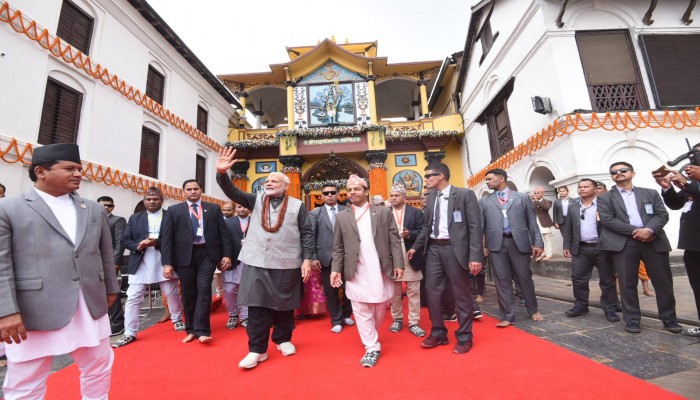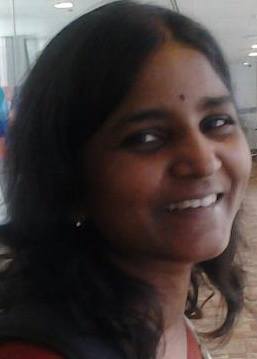Invoking strong cultural connect Modi reaches out to Nepal- The ball is now in Nepal's court
- In Foreign Policy
- 06:37 PM, May 16, 2018
- Ramaharitha Pusarla
Prime Minister Narendra Modi’s two-day visit to Nepal on May 11, 12, comes as a follow up to Nepalese Prime Minister K.P. Sharma Oli’s trip to New Delhi reinforcing India’s strong interest in stabilizing ties with the Himalayan neighbour. With China’s muscle looming large over the subcontinent, Modi, the architect of neighbourhood first policy, began building strong ties with immediate neighbours since 2014. True to the spirit of the policy, Modi visited all the neighbouring countries barring Maldives and as toast of friendship gifted South Asia satellite hoisted by ISRO. Unlike his previous two visits to Nepal which ended on a high note, Modi’s current visit comes at a time, when Indo-Nepal relations having weathered turbulent times are still facing trust deficit. The trouble began when Nepal new draft constitution accorded special privileges to ruling hill tribes side-lining the interests of Madhesis of terai (plains) region. This discriminatory stance caused spurt in protests leading to blockade of Indian boundary stalling the movement of goods and supplies choking Nepal. The eight-month long blockade turned Nepalese hostile towards India and the current regime of OIi stormed into power by riding on this anti-India wave. Oli, who currently heads the opposition of the leftist coalition party sworn in as Prime Minister on February 15th honouring the tradition, made first visit to India. In his first stint as Prime Minister the height of blockade, Oli accused India of the crisis and signed several agreements with China. He also alleged that India plotted his ouster as Prime Minister and played China card.
India and Nepal which share strong cultural, religious and historical ties, have strong people to people connect. Indeed, both countries have porous borders and India is largest sources of remittances for Nepal and its biggest trade partner. Despite the strong linkages, bilateral ties between the countries were roiled by misunderstandings with Nepal alleging India’s interference in its domestic politics. Geographically Nepal being the inner boundary is very important for India. Sandwiched between Asian giants, Nepal afflicted by “small country syndrome” has effectively played Indian card against China and vice-versa for a long time. But now the current dispensation which is overtly pro-China is making repeated references to “mutual respect” highlighting the erosion of trust. Faced with the challenge of building a harmonious relation with immediate neighbour, Modi has embarked on his third visit to Nepal with focus on three Cs- Cooperation, Connectivity and Culture.
Resonating with the idea of collective development and regional cooperation, India has increased financial aid to Nepal by 73% this financial year to Rs 650 Crore next to Bhutan which receives highest financial assistance of Rs 1813 crore. While there is no official data, it is estimated that 2 million Nepali work in India and to facilitate safe and cost-efficient transfer of remittances, RBI has introduced India-Nepal Remittance Facility Scheme. India has always displayed a strong interest in sustaining robust relationship is now facing the challenge of countering the check book diplomacy of China.
Modi’s recent visit which was devoid of any big announcements is a spectacular effort to reclaim lost place in Nepal. Dubbed as “cultural diplomacy”, by strategists, Modi’s meticulously planned itinerary of two-day whirlwind program of visiting three places of religious importance besides holding bilateral ties covered a vast ground. On May 11th Modi travelled to Janakpur, close to Bihar border and offered special prayers Janaki Temple, the birth place of Devi Sita. Later Modi and Oli jointly flagged off a bus service between Janakpuri to Ayodhya, birthplace of Bhagwan Sri Rama. These two sacred places are immensely significant to Hindus. These places are now going to be part of the ambitious Ramayana Circuit which will include 15 other places across India spanning the states of Bihar (Sitamarhi, Buxar and Darbhanga), Uttar Pradesh (Ayodhya, Nandigram, Shringverpur, Chitrakoot), Jharkhand, Chattisgarh (Jagadalpur), Madhya Pradesh (Chitrakoot), Orissa (Mahendragiri), Maharastra (Nashik, Nagpur), Telangana (Bhadrachalam), Karnataka (Hampi) and Tamilnadu (Rameshwaram). NDA government which made no secret of its intentions of promoting religious tourism began investing heavily in building necessary infrastructure which includes the promise of building a 100 mt tall Bhagwan Rama’s statue by the side of river Saryu in Ayodhya. Inauguration of bus service between India and Nepal both Hindu majoritarian countries will boost tourism, people to people connect and will strengthen trust. Thousands of Nepalese gathered outside the Janaki Temple to welcome Modi where the provincial government has declared a holiday.
Speaking at the civic reception organised by Janakpur provincial government attended by over 1 lakh Nepalese, Modi highlighted on the deep traditional links between the countries. He indicated that Nepal is of top priority in India’s Neighbourhood First policy. He asserted that “India would stand with Nepal in its development journey”. He said, “We are the base camp now. India is ready to play the role of a Sherpa guide, taking the expeditioners from the base camp right upto the peak of Mt. Everest”. Modi promised $100 million towards for province’s development which will be routed through Kathmandu. Later Modi flew to Kathmandu where he was offered Guard of Honour at the Army Parade Ground in Tundikhel. He met President Bidhya Devi Bhandari and Vice-President Nanda Bahadhur Pun.
In his second summit meet with Prime Minister Oli, Modi reiterated resolve to work together for strengthening on-going cooperation in various initiatives like agriculture, railways, inland water development projects and expand the partnership for socio-economic development. Both sides assured that they “will take effective measures for the implementation of all the agreements and understandings reached in the past”. Leaders took stock of the economic ties and India assured Nepal to make necessary amendments in the comprehensive review of bilateral treaty of trade to address the issue of Nepal’s trade deficit. Taking cognizance of Nepal’s request for additional air entry routes through India, New Delhi promised to expand cooperation in civil aviation sector. Additionally, India agreed to enhance economic and physical connectivity by air, water and land. Both prime ministers jointly laid foundation stone of 900 MW Arun-III hydro electric project in Nepal. For long, India made tall assurances to Nepal but failed in time-bound deliverance. Allaying Nepali angst over poor implementation of Indian projects Modi promised to expedite priority projects of Nepal’s choice.
Modi visited the Pashupathi nath Mandir, the oldest and sacred temple of Bhagwan Shiva. During President Pranab Mukherjee’s visit to the temple in 2016, government of India aided the establishment of Nepal-Bharat Maitri Pashupathinath Dharamsala Project. In a message to Nepalese, Modi wrote, “I am happy to get another good opportunity to pray at Lord Pashupatinath Temple. This temple is a symbol of the combined religious heritage of peopke of India and Nepal. I wish for peace, progress and prosperity in lives of people of Nepal and India. Iam grateful to Pashupatinath kosh and government of Nepal for making arrangements for my visit. I hope that devotees will soon get new facilities from the new Dharmashala being developed by India and Nepal on the temple premises”. in the visitor’s book.
Wrapping up Nepal’s visit Modi flew to Mustang in the Northern Nepal becoming the first World leader to offer prayers at Muktinath Temple scared for both Hindus and Buddhists. Wearing a red dress symbolic of Buddhists performed puja to life-sized murthi of Bhagwan Vishnu. The temple is highly revered by a larger community of Sri Vaishnavas of Karnataka,. Modi’s visit to temple a day ahead of Karnataka elections resonate well with domestic electorate.
The rapid developments in Nepal and its newly calibrated foreign policy have a direct bearing on India’s national interest due to open borders. Targeted attacks on Indian assets has become cause of concern. Two bomb explosions-one near Indian Embassy field office at Biratnagar and an explosion near Indian-built power project within a month has triggered a panic reaction in New Delhi. The explosions in quick succession together with Pakistan Prime Minister’s Shahid Kahan Abbasi’s visit to Nepal days after Oli has sworn in as premier warranted India’s immediate attention. Besides, creeping Chinese penetration into Nepal and its inclement urgency towards building a railway connection from Shigatse to Kathmandu has promoted India to deepen partnership with Nepal. Also, China has been constantly invoking the common Buddhist linkages with Nepal and pledged to develop Buddhist monuments.
Religion and culture have been the strongest connecting links between India and Nepal. Hinduism which is a global minority is the major religion in both countries. For long leaders of both countries had been shy of wearing their religion on their sleeves. For the first time, Modi forthrightly took the pride of being a Hindu and emerged as an icon for the aspirations of Hindus who were facing similar threats in both countries. While Modi, has been highly criticised by hardcore Hindu leaders for failing his core support base in India, till now no Hindu leader unabashedly displayed his religious identity. With his ingenious diplomacy which is getting better by the day Modi is raising the bar for domestic politicians and his successors as well. Modi engaged with leaders of various political hues in Nepal to normalise relations. Aside his formidable soft power diplomacy, Modi has promised to deepen cooperation, partnership and offered support on various fronts. The message is loud and clear: India is ready to make all amends to strengthen the relationship. The ball is now in Nepal’s court.







Comments